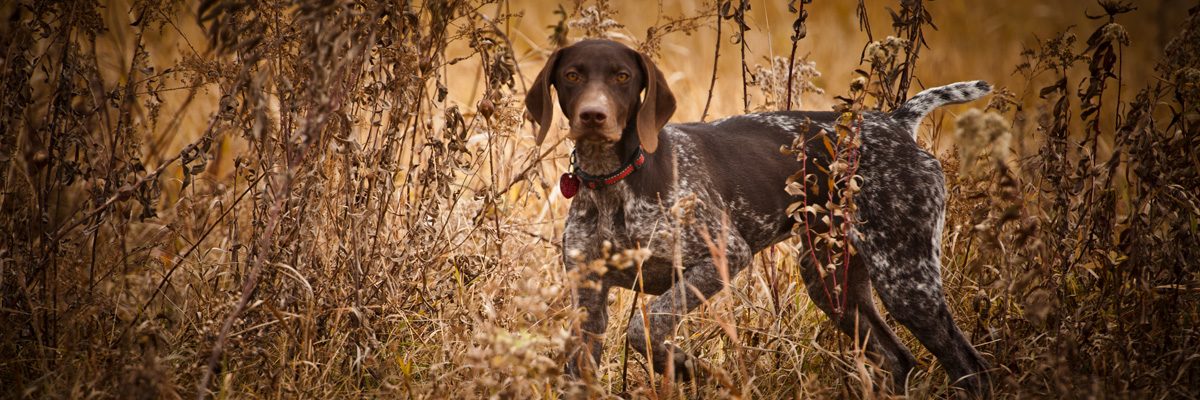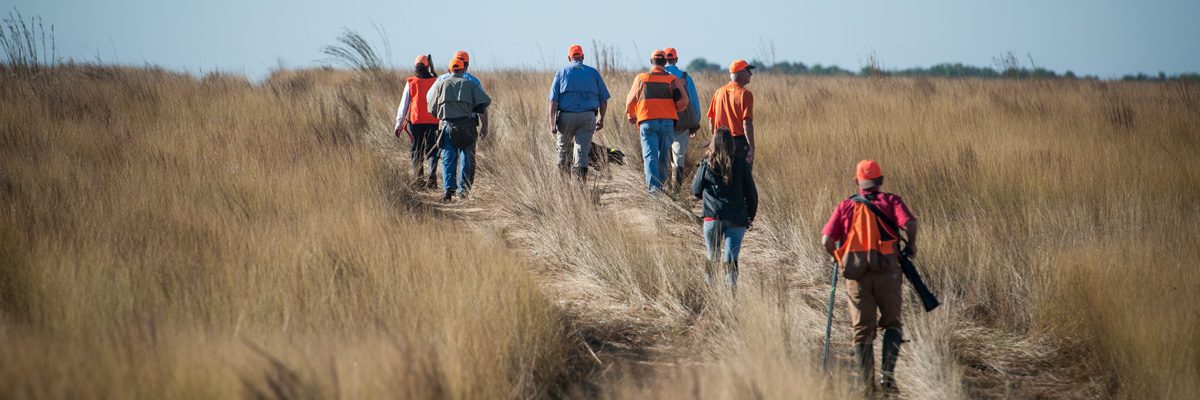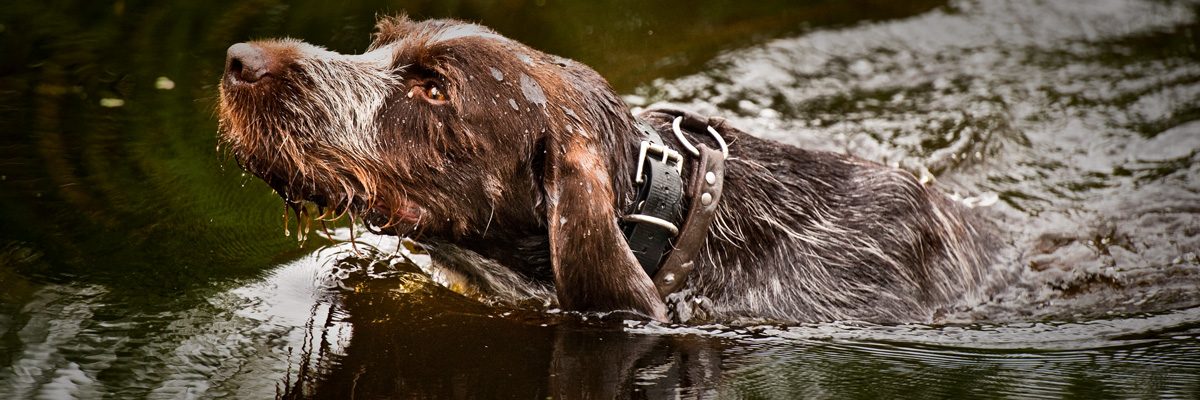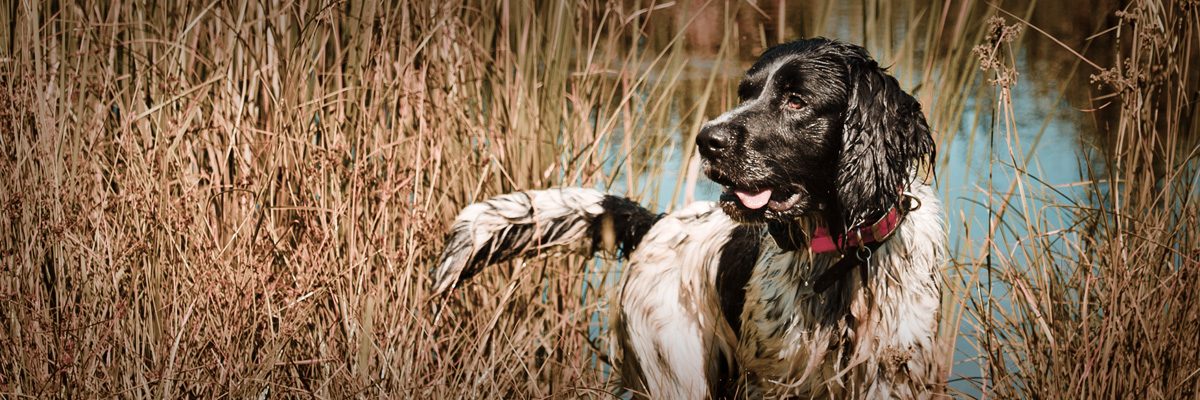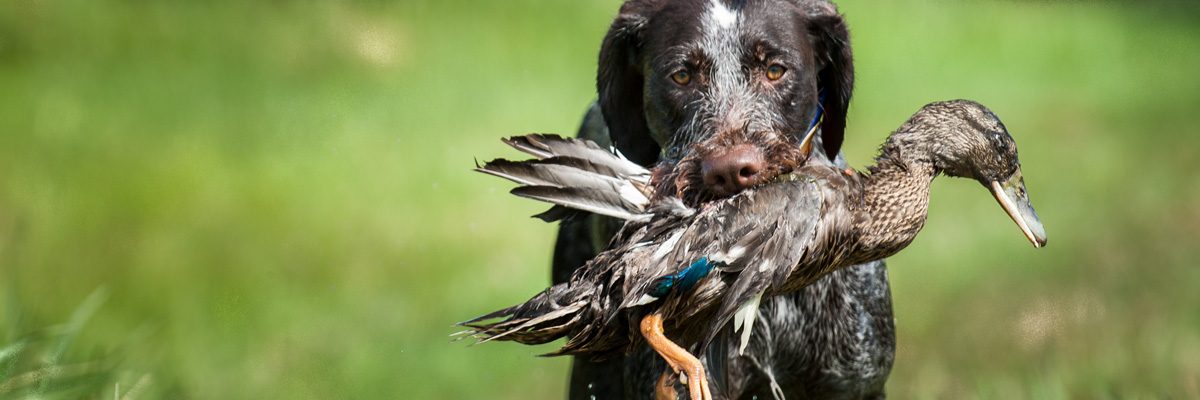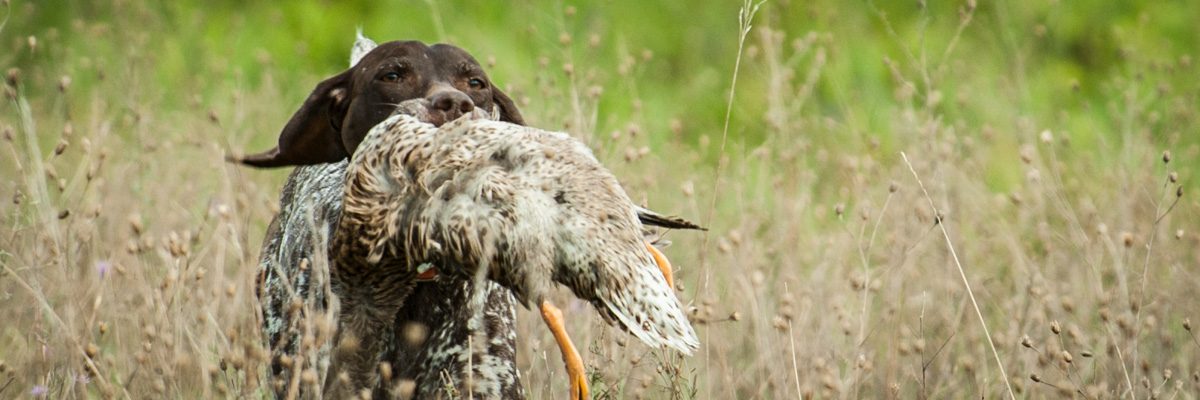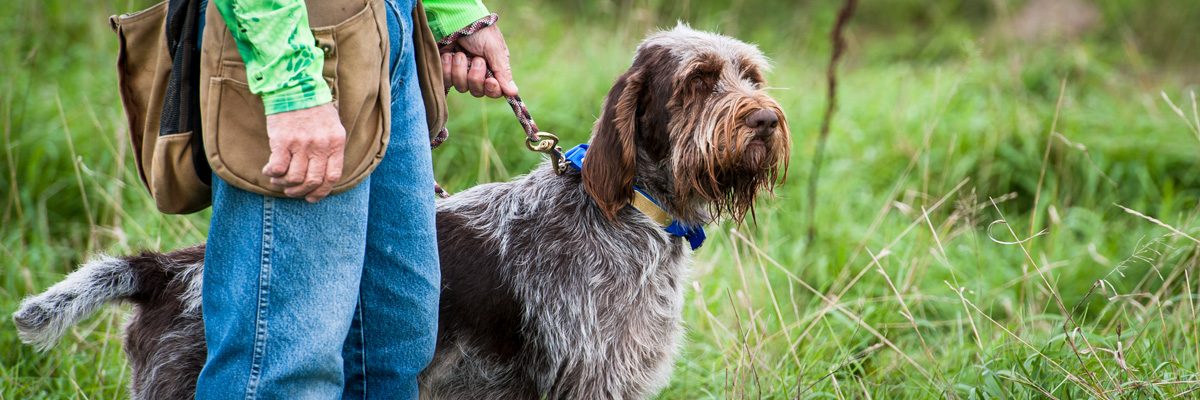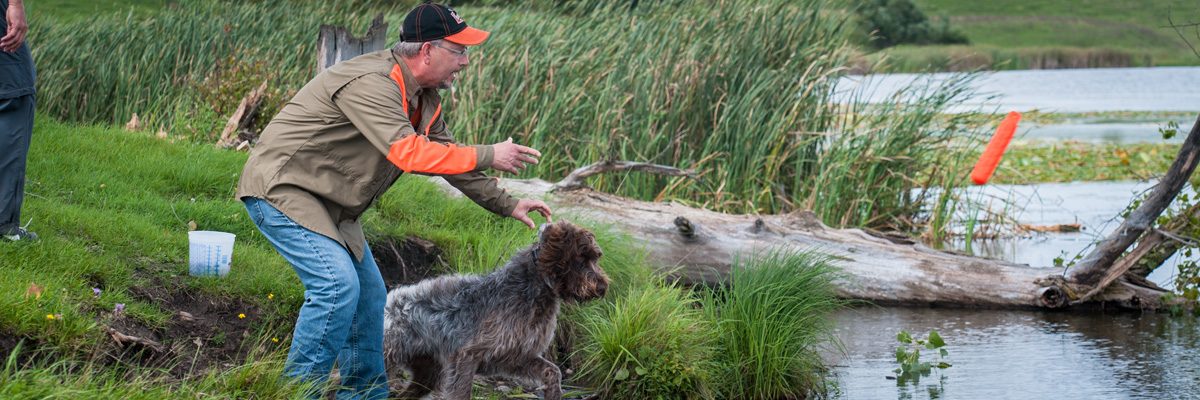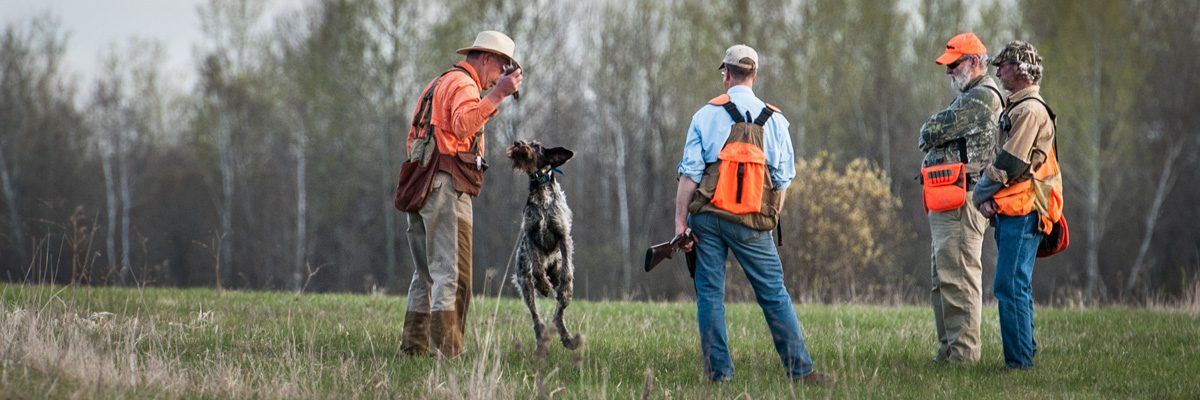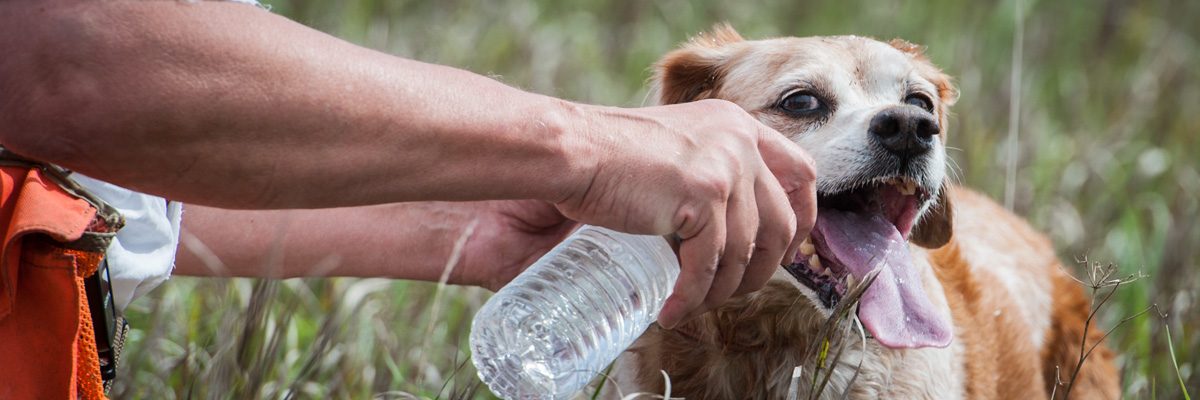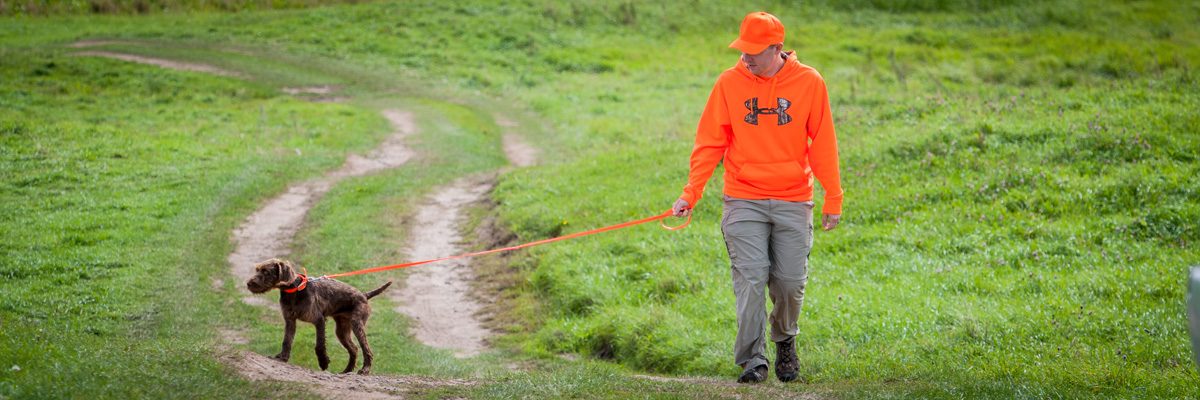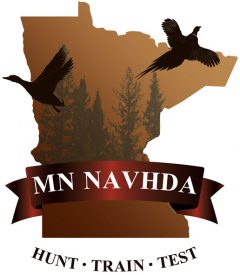According to the NAVHDA AIMS book: “The Utility Preparatory Test (UPT) is designed to evaluate a dog midway in its training towards becoming a reliable versatile gun dog.
The Utility Test (UT) is designed for more experienced dogs in an advanced state of training. It evaluates their ability to perform as reliable versatile gun dogs and demonstrate their physical and mental capability to take training.”
What follows in this article will make more sense if you are familiar with the different segments of the UT test. You can refer to the NAVHDA AIMS Programs Test Rules
The UPT test requirements allow a dog a bit more slack in Retrieving and Steadiness, but for the sake of this discussion let’s start with looking at how dogs are evaluated and judged at the UT test.
OBEDIENCE: If you look at the scorecard for the UT test, there are 13 areas where the dog is being judged on Obedience.
RETRIEVING: Their are 3 different retrieving events on the UT test. There will be multiple opportunities to retrieve shot birds in the field. Dead ducks will be retrieved on land & water, and an opportunity to retrieve a live duck is also a possibility during the Search for a Duck.
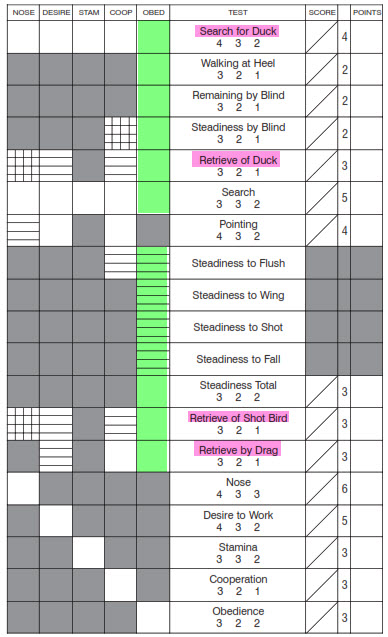
There is no “right” or “wrong” way to train a versatile dog, and all dogs respond to training differently. The following steps provide some guidance on the order in which one might consider training a dog for the UPT or UT test without getting bogged down in the various methods of training retrieving and obedience.
PHASE 1: Retrieving-A dog needs to be a RELIABLE retriever of game to qualify for a prize (pass) this test. The game it is sent out for MUST come back to the handler to receive a passing score. Dogs that retrieve reliably to hand with minimal commands achieve the highest scores. There is NO point in training the segments of the UPT or UT test if your dog does not bring back game RELIABLY. Having to correct this behavior while actually out running the test event segments during training is a waste of time, birds, and can confuse the dog. Even if your dog is a very natural retriever, reinforcing that by doing a force fetch or conditioned retrieve process and making sure you use real birds & ducks during the process will pay off on test day, and in the field during hunting season.
PHASE 2: Search for a Duck-A dog needs to achieve a minimum score of 2 out of 4 in this segment to pass the UPT or the UT test. In general, this means the dog must go out and search for a wounded duck that it did not see fall for a certain amount of time and search a certain amount of the water & cover. This takes a tremendous amount of independence and desire to work AWAY from the handler. Dogs that are overly cooperative or have had too much steadiness training BEFORE building this independent love of searching for ducks can often struggle with this part of the test. High prey drive dogs with a strong passion for ducks can master this task in a short amount of time, and even recover quickly from too much steadiness training. In general, though, it is best to err on the safe side with this and make sure your dog has the GO and loves to search for ducks before you teach it to WHOA ! (Steadiness). Another caveat here is to avoid throwing too many objects for your dog during retrieve training, especially at the water. Dogs that get too accustomed to going on the strong visual cue of a marked object oftentimes have trouble expanding their water search out of the range and distance they are used to retrieving these items. Another tip-NEVER train duck search in the presence of a blind at the water. Dogs learn by association, and we do not want the dog confusing this segment of the test with the “Remain by Blind” portion.
PHASE 3: Heeling-Your dog should have been accustomed to walking on a leash and trained to not pull and have some basic manners while it was a puppy, but now the test requirements call for a much more higher level of obedience. You will notice on the UT scorecard that the ONLY trait being judged and scored during heeling is Obedience. Teaching a good clean heel with your dog is a very good place to start more advanced obedience because you have a direct connection to the dog to make timely corrections and it can really set the tone for making the dog know you are the boss. Achieving a good level of Obedience in heeling will pay off big time when you move on to whoa training and steadiness.
PHASE 4: Field Steadiness (Flush, Wing, Shot, Fall) and Steadiness at Water (Marked Retrieve Sequence)-Whether you train steadiness by the blind at the water next or move to the field and start working on steady to flush, wing, shot and fall is not critical. They both involve off leash obedience and training a dog to stay put in the presence of distractions until you release the dog. There are various ways to train steadiness. The point I am trying to make is WHEN to work on it, not necessarily HOW. When training steadiness for the field (Flush-Wing-Shot-Fall), great care should be taken in the amount of pressure being put on the dog in the presence of birds so as not to diminish it’s pointing intensity or it’s field search. Any use of check cords and e-collars in the presence of birds in this phase need to be done very carefully. A really solid WHOA foundation BEFORE putting birds down for the dog will really cut down on the number of birds you will need. In a NAVHDA test, you CANNOT use an e-collar, and being able to STOP a dog that breaks with a verbal WHOA or a whistle can save your bacon! Verify that you can verbally WHOA your dog in any situation, with any distraction, including in the presence of a flushing bird or multiple birds or running visible birds.
PHASE 5: Putting it all together-When your dog has shown it has a good understanding of all the UT test segments and is meeting your expectations of performance, it is time to start mixing it up and moving from segment to segment and take note of any problems you see. A common thing that can happen is that after doing all the steadiness training, the dog’s duck search will diminish and you will have to go back to that for awhile. When field training, you will also want to make sure you run your dog not just on a couple birds, but do a full 30-45 minute field run in a variety of cover and weather conditions. Strange things can happen on test day, and you need to be prepared for these and train for these. If the cover is sparse, and birds are visible and running, can your dog handle it? Did you train for that? If birds are grouped up and multiple birds flush, can your dog handle it? Did you train for that? If your dog is coning back with a bird on a retrieve and goes on point on another bird, how are you going to handle that? Did you train for that? If it is raining and the birds are soaking wet at the test how will your dog react to the change in scent and bird behavior? Did you train for that?
Prizing or Passing a dog in either the NAVHDA UPT or UT test will be a rewarding experience for the handler. Even obtaining a Prize 3 in UPT shows that you have a useful hunting companion on land and water, before and after the shot.
